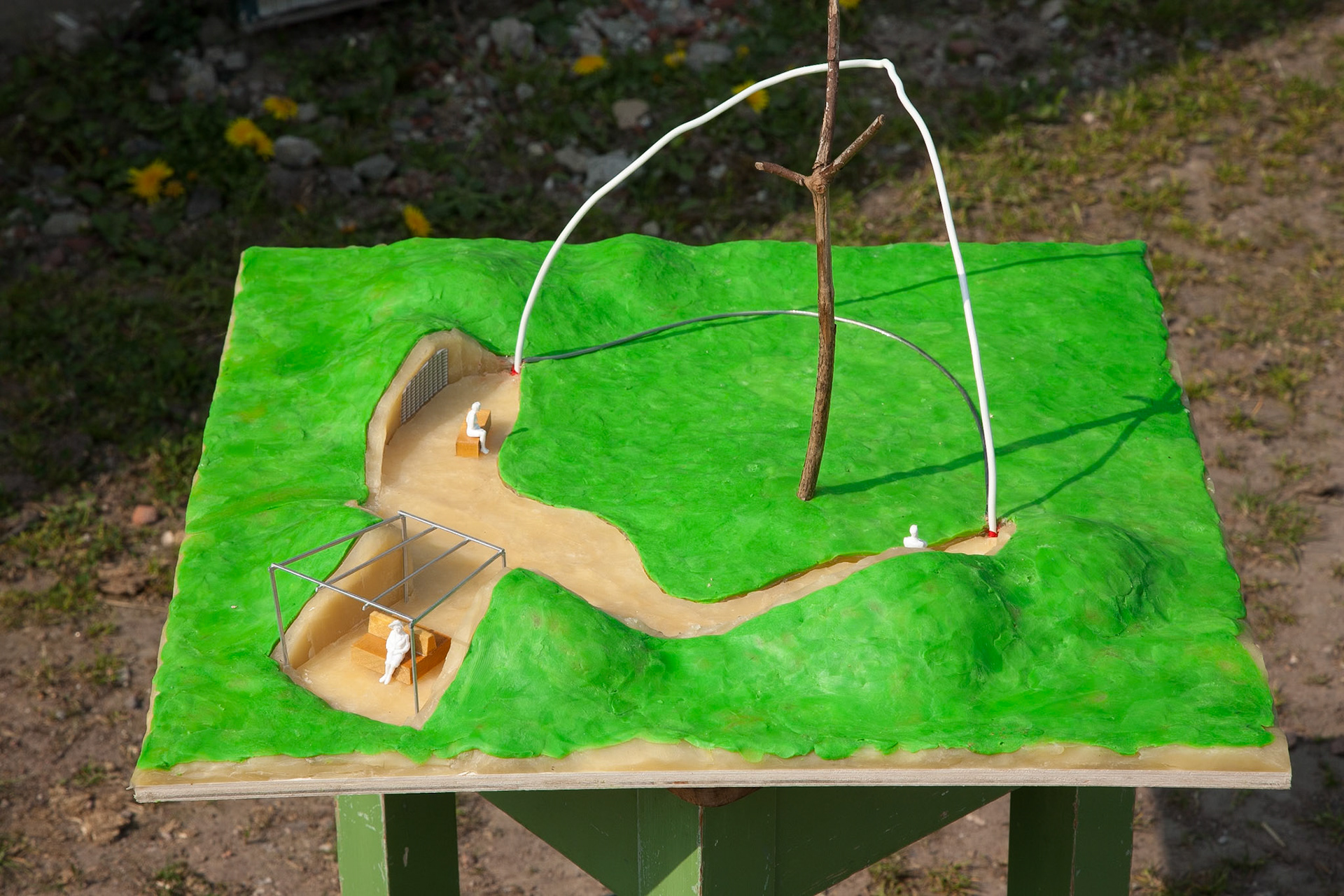
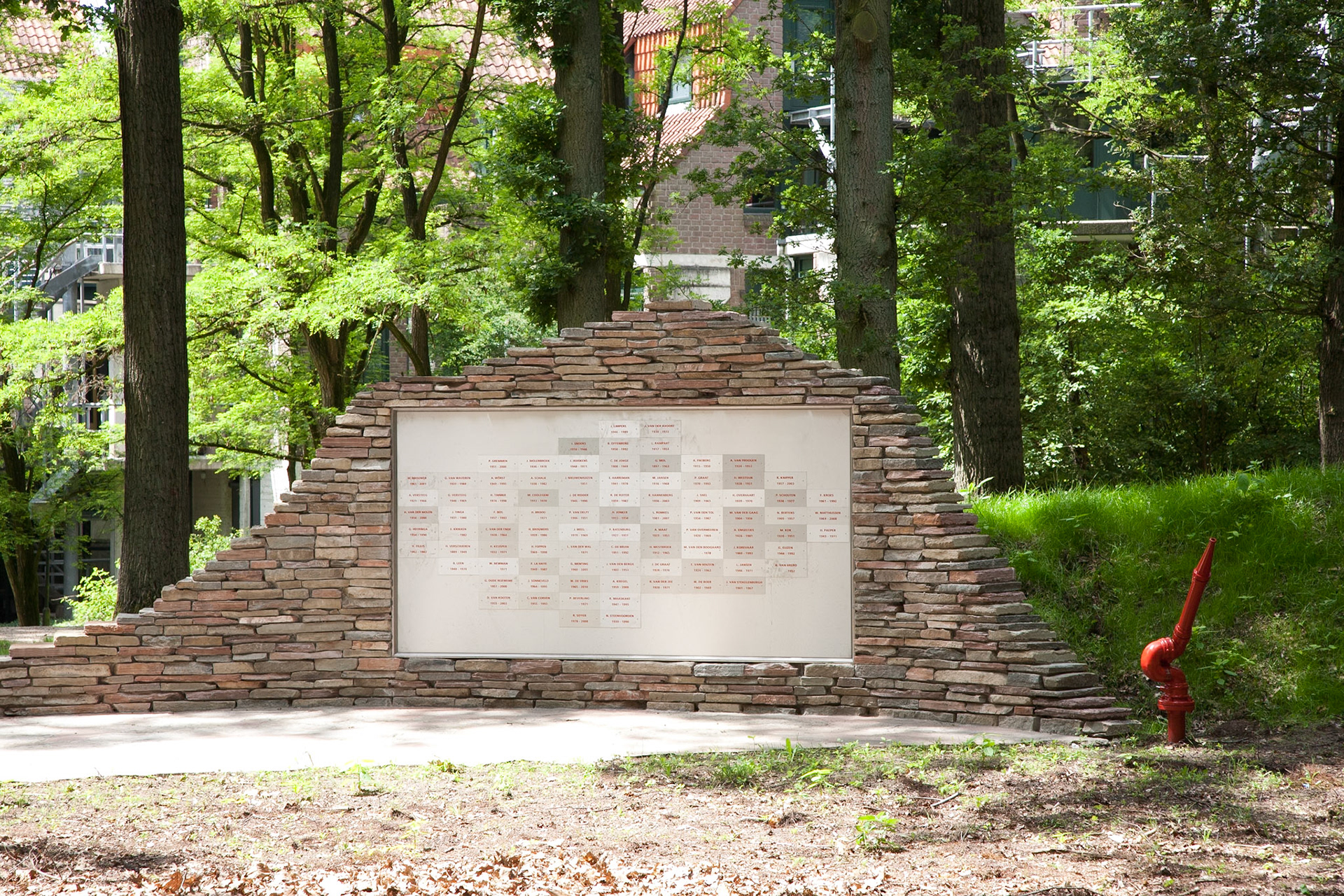
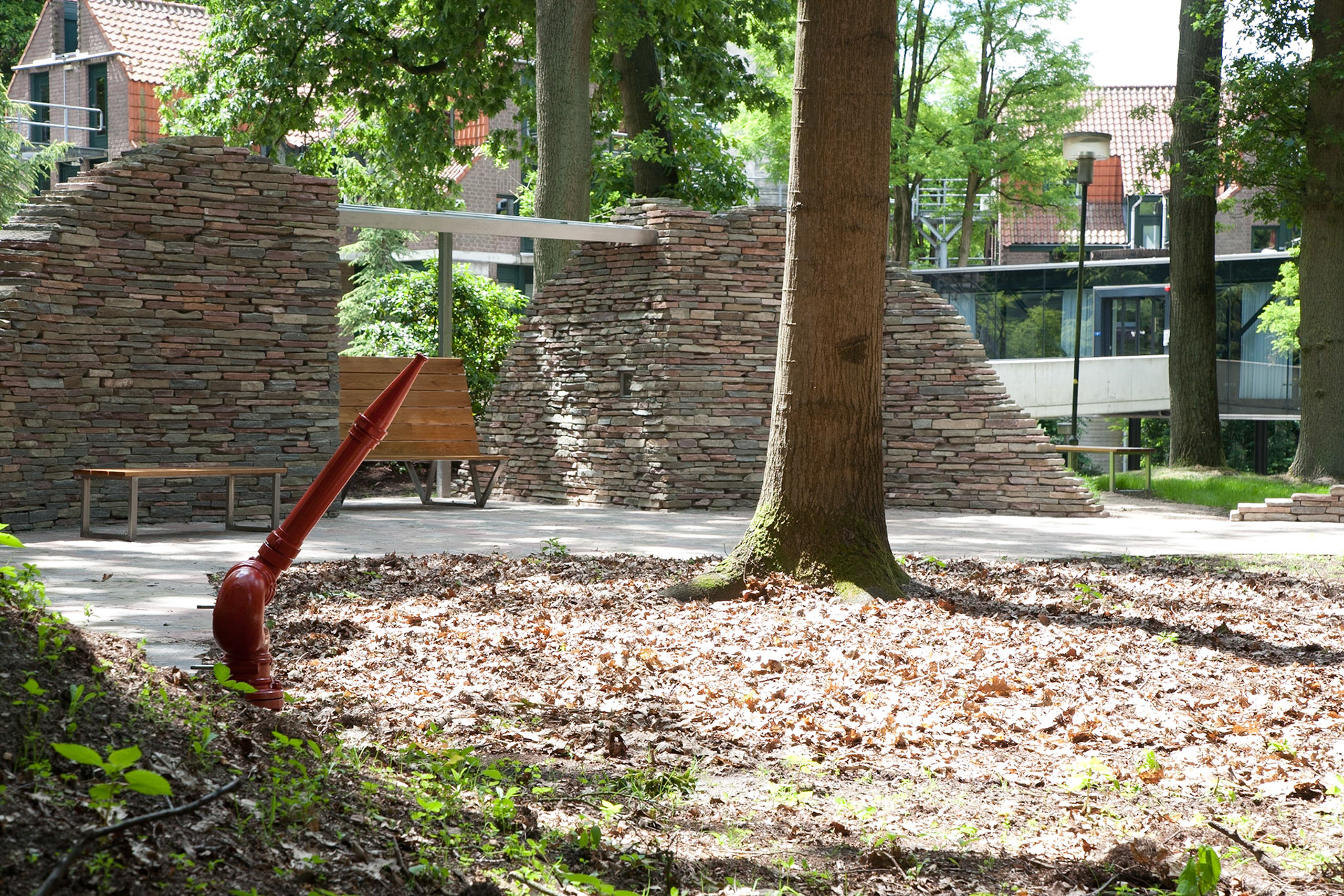
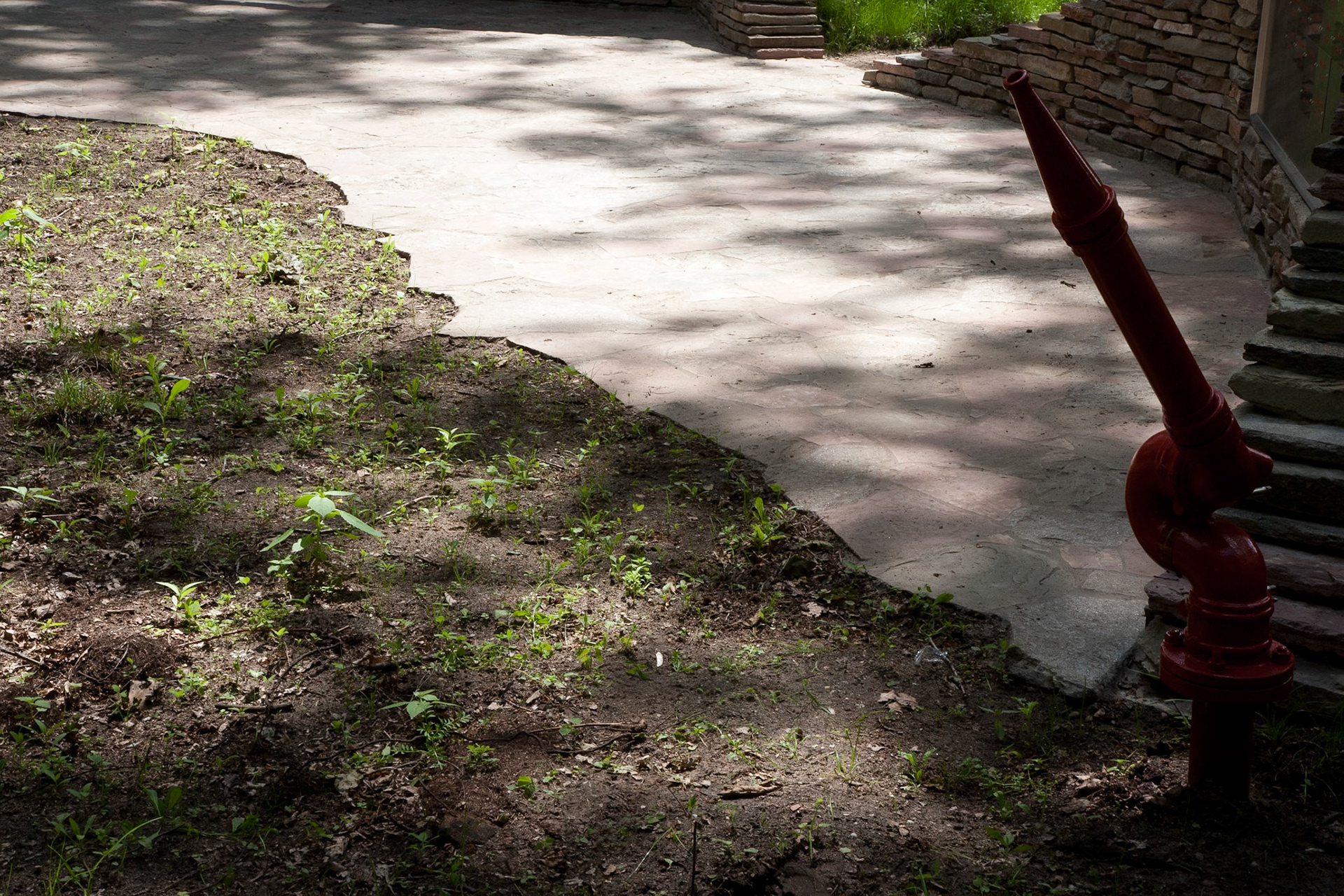
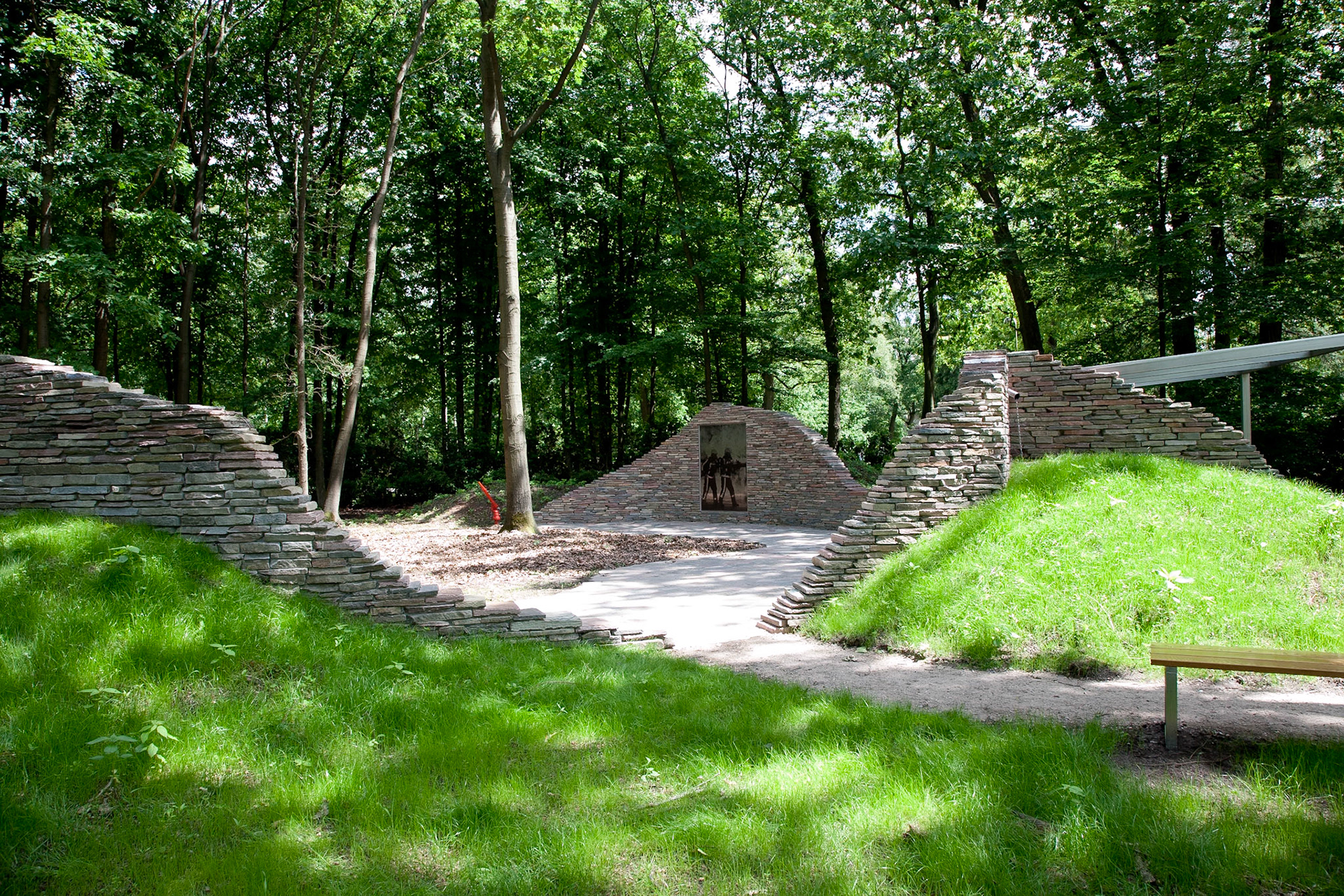
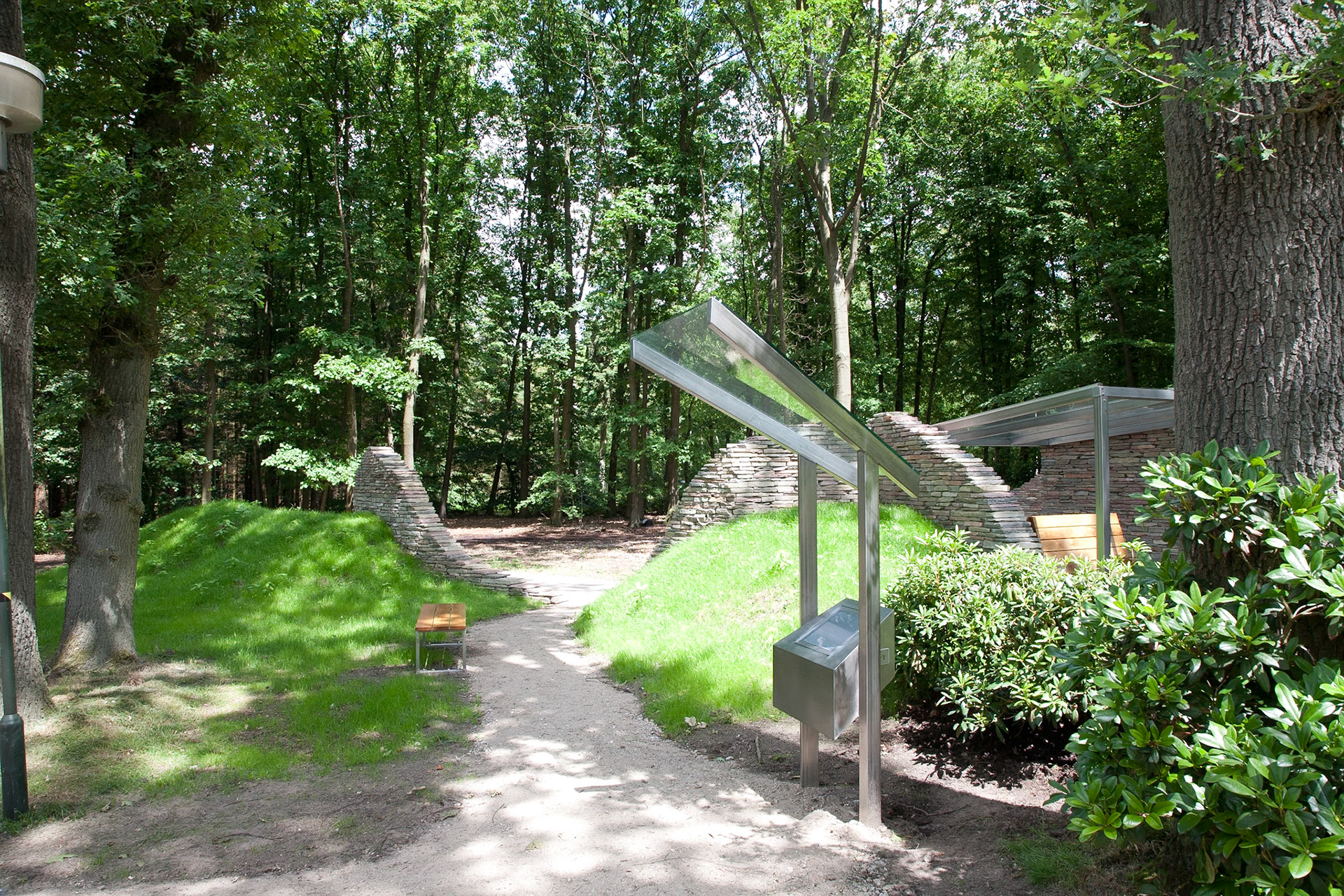
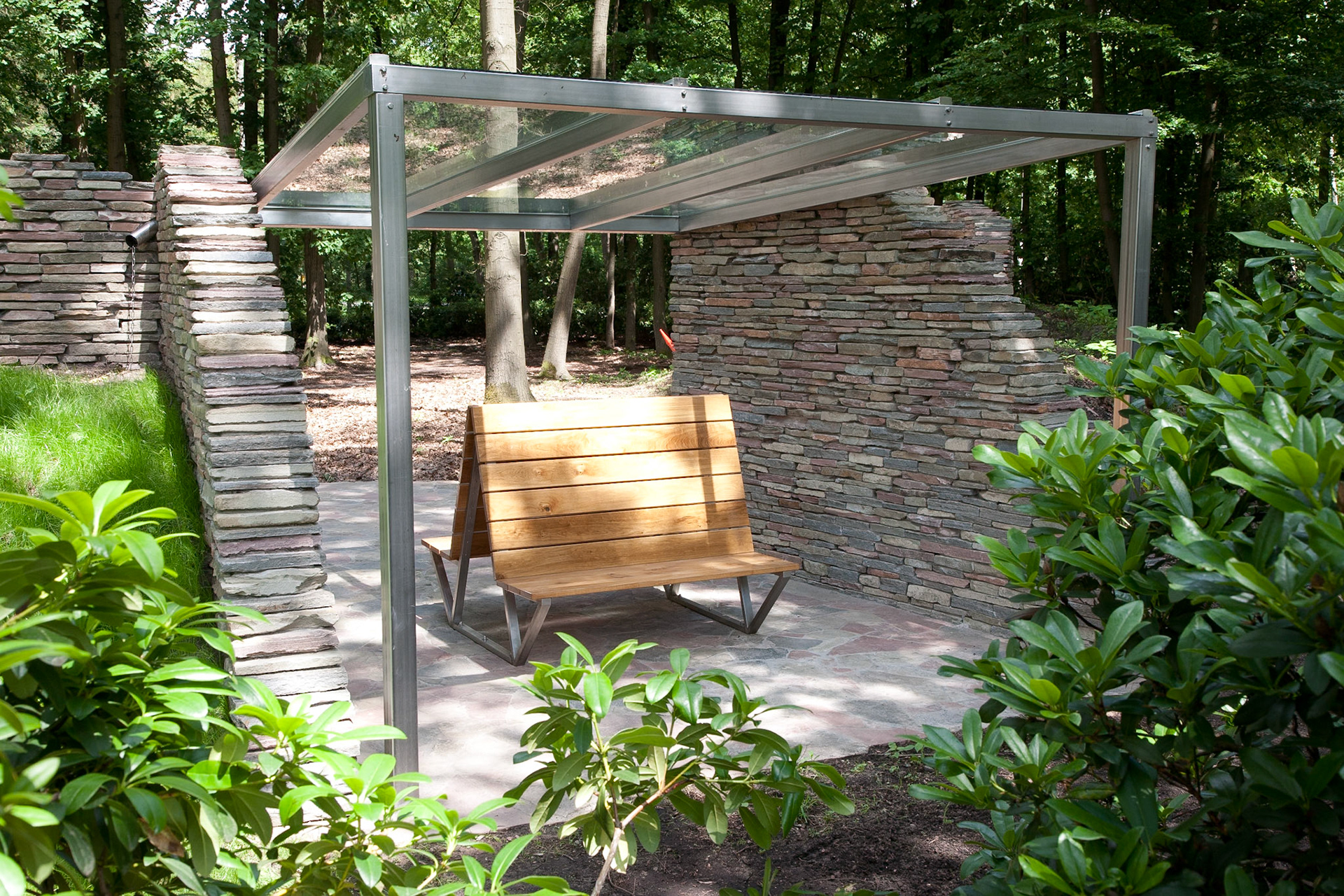

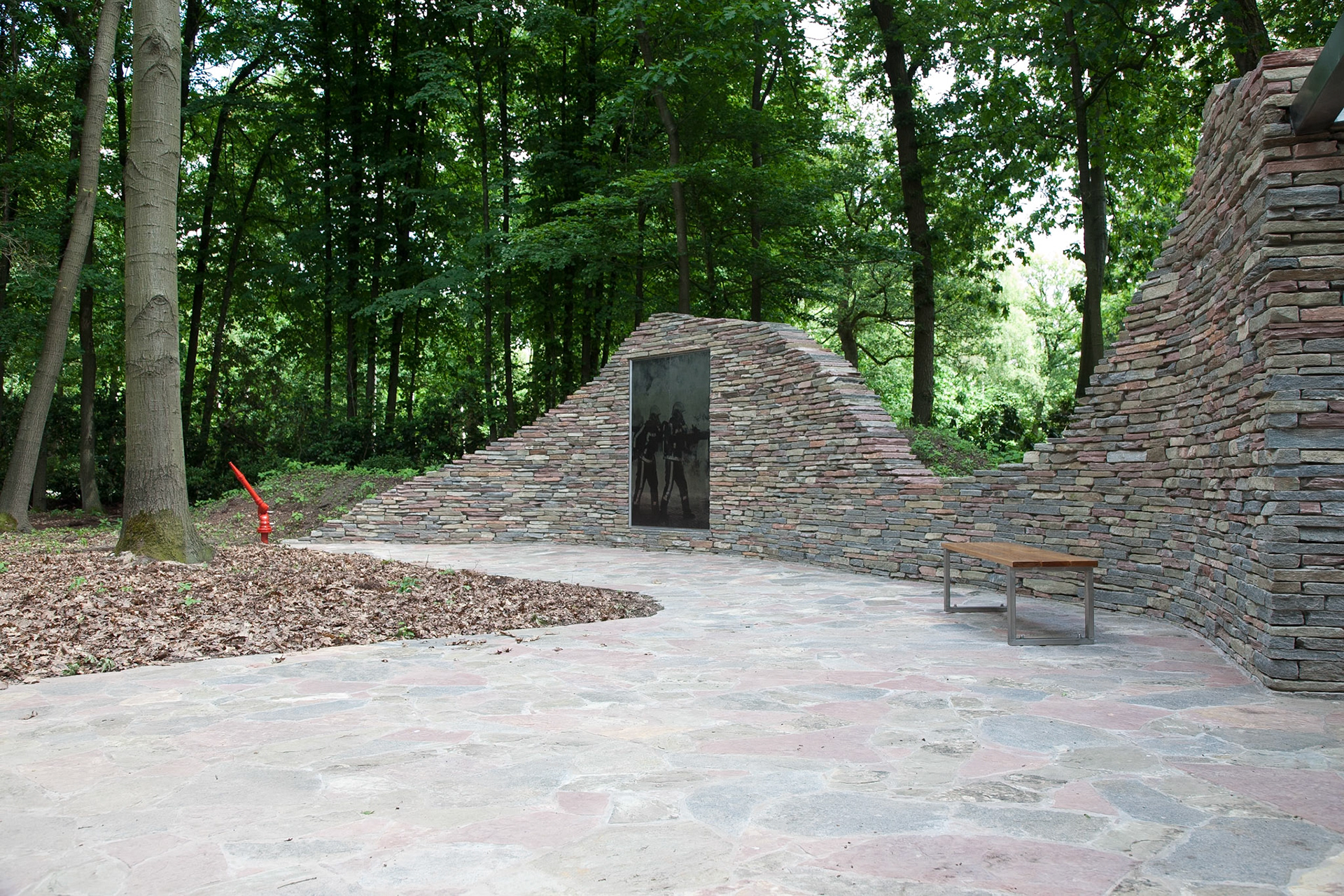

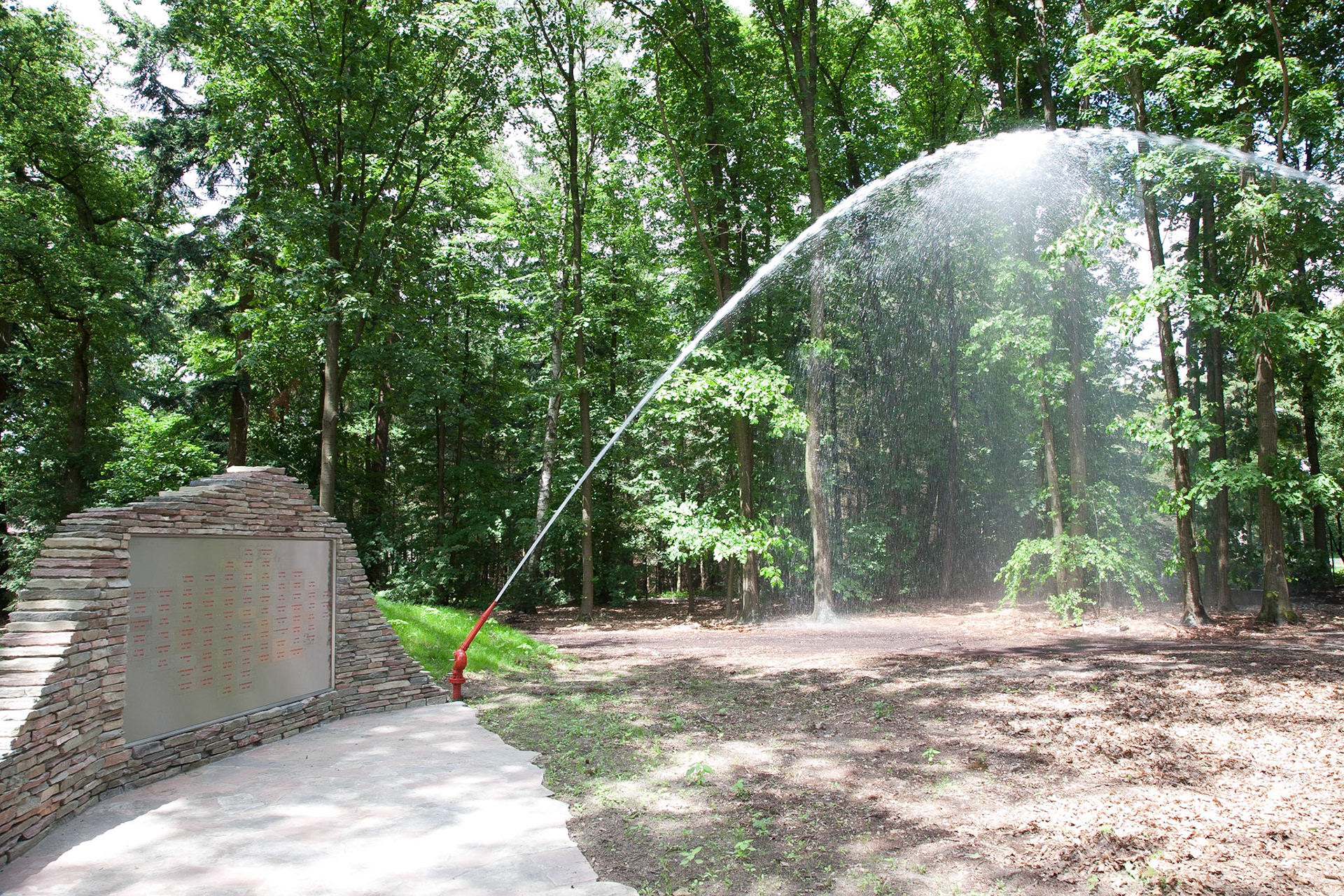




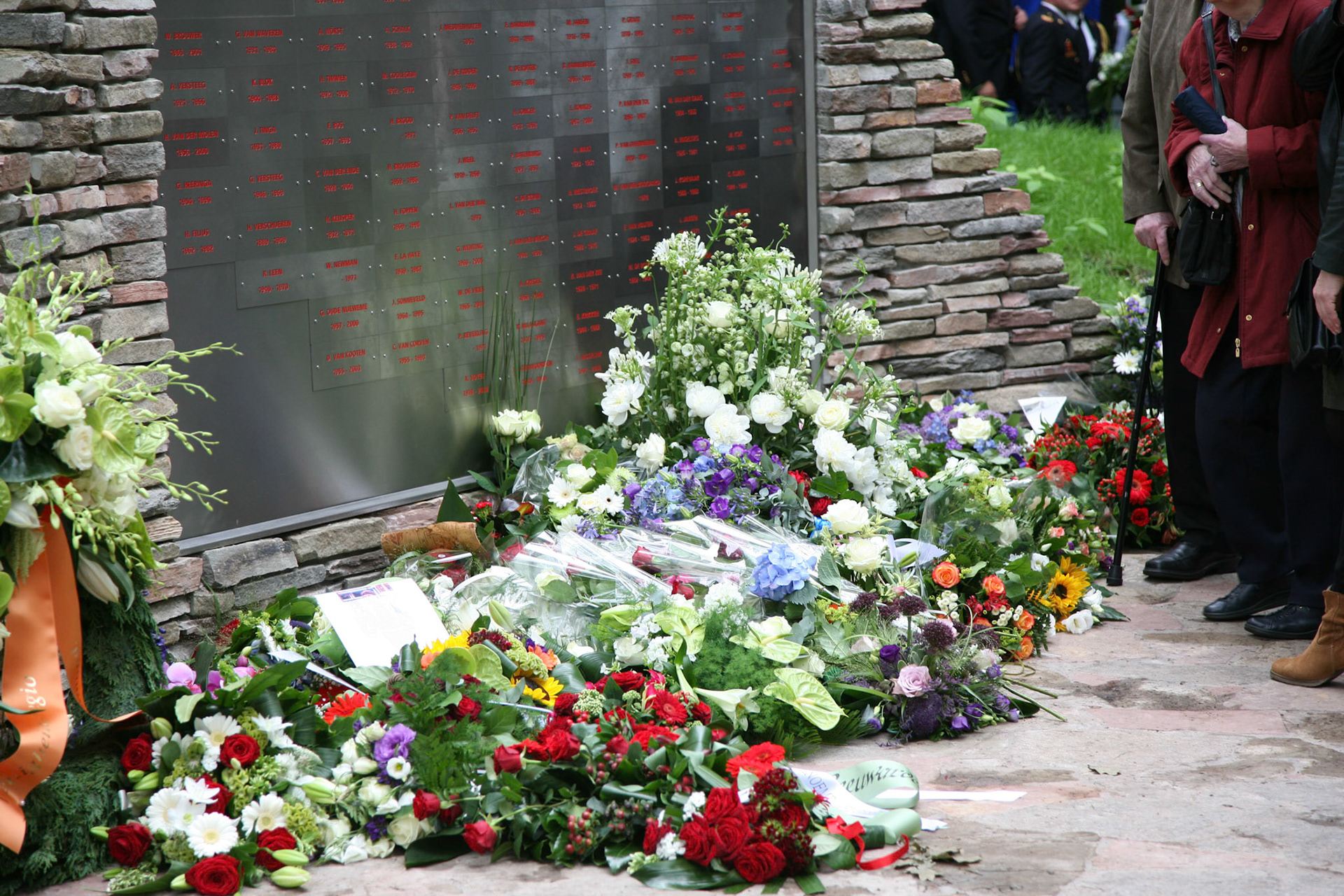
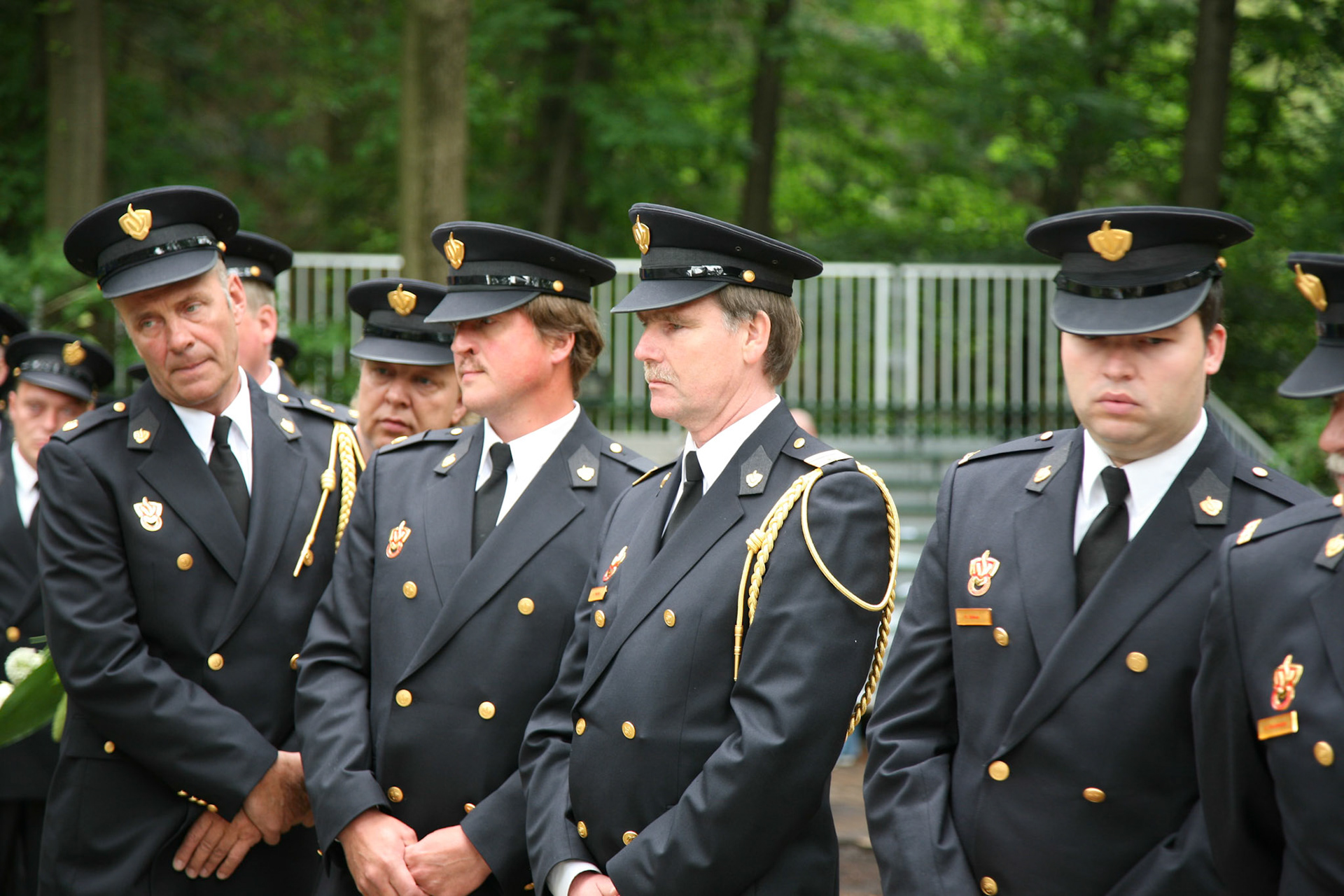
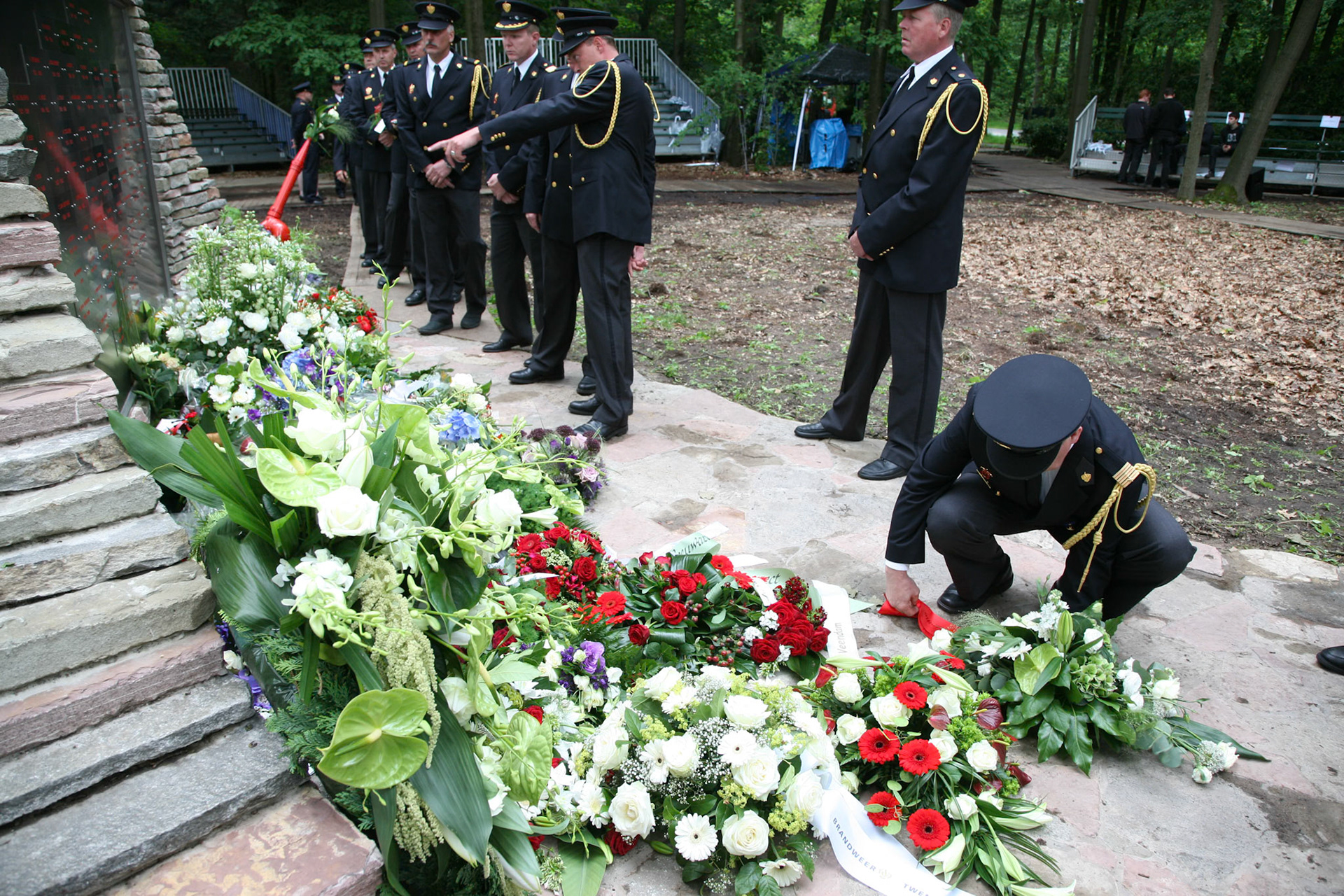

Commissioned by the National Firefighters’ Monument Foundation, Gramsbergen (nl)
On the path leading up to the National Firefighters’ Monument, you can just glimpse, on your left, a small statue on a pedestal: the Social Worker. A bronze man with an open, flaming heart, “a worthy person, ready to help, to brave dangers, passing through fire and flames”. Yes, this description also fits the fireman, helpful to the core and braving dangers: it’s a risky profession. Opposite the little statue of the Social Worker there is now a special monument dedicated to the remembrance of those firemen – and women – who have perished whilst carrying out their duties. Their next of kin, friends and colleagues wanted a national remembrance site and the architectural artist, Jeroen Doorenweerd has given them this site.
The mystery of death always has us in its grip. What happens to the mind, the soul, the thoughts and all the knowledge that made this man or woman the person they were. By talking about the loved one and by thinking about him we hope to keep him close to us. My neighbour continued to hold long conversations with his wife after her death. I wrote letters to my dead sister. Every photo, conversation, statue or anecdote is an attempt to stay in contact. But the sorrow itself is speechless and lonely. A loved one, who dies, leaves us behind in desperation; who are we without this person? It’s a grim prospect. It’s unthinkable. Going on living means continually missing someone, just wanting to ring them to tell them that the cake you baked was such a success, or to say that you’ve just seen the first robin as the summer begins. Most of all you want to tell the one you are missing that it’s impossible without them. So absolute, never more. That’s what loneliness is.
And then, the “why?” It’s dangerous being a fireman, you know the risks, you’re prepared but, at the same time, you’re never prepared for it. A death is always unexpected. The “why” remains. The artist, Jeroen Doorenweerd, was moved by all the stories told by the bereaved relatives, about their only son, about a father with a family and children still so young, sometimes it was a year ago, sometimes even 10 years later, but the pain keeps grating and jabbing. He was also impressed by the Fire Service as a profession. On the occasion of his first presentation everything was ready and Jeroen was just about to start his introduction when the fire alarm went off. All of a sudden everyone had disappeared and everything was different. When a fire breaks out a fireman puts on a special suit, leaving his fear behind with his everyday clothes in the fire station. Fear is not practical. Cautiously, always cautiously, each manoeuvre guided by knowledge and by the training he has followed; a fireman knows, almost automatically, what he has to do. Entering a building, two men together according to a strict protocol, so that you can find your way back afterwards. A fireman knows the risks and he takes them for us, the public.
The remembrance site needed to be somewhere in the middle of the Netherlands, easy to reach but also an intimate spot. “Being asked to build a monument actually feels as if you have a stone in your stomach”, says Jeroen. “A statue is often made of bronze as an impenetrable, massive symbol, whilst grief is a physical feeling, something lodged within your body. I see grief more as a mist, or as toadstools nestling in a damp patch”. Jeroen Doorenweerd wanted to make a different kind of monument: a site for bereaved relatives, a place you could go to, to leave behind some of the weight of the loss, to be together and to know, without words.
It’s not easy to talk about grief because it’s something you can’t always control. It comes unexpectedly and in waves. It often upsets the person you’re talking to as, what can they say? Death makes us speechless and we sit silently beside one another, awkward and clammy. So Jeroen Doorenweerd wanted to create a spot where bereaved relatives would feel understood.
He started by felling a few trees, to make a clearing in the wood. On one side he created sand hills to give an intimate and protected spot that would not be visible from the road. Stones were then piled up against the sand hills to form sturdy but loosely-built walls, that shore up the sand. Or the other way round. Doorenweerd had stones brought from Macedonia to create crazy paving in greenish, greyish and silver-glinting shades, carefully selecting the stones and putting them together, like pieces of a puzzle to form a floor. He added benches, made of wood, on which you can sit in tranquillity while the birds sing and twitter, the trees wave in the breeze and, somewhere in the background, a car passes by on the road. Sitting on a bench, you feel supported by the walls of stone and the heaps of sand. The green of the wood opens up in front of you and the shadows of the trees fall in a tangled pattern over the black-brown earth. Jeroen Doorenweerd had envisioned a monument that would be able to stir up grief and then to soften its impact. “Death doesn’t need to be represented in a massive way, not black and suffocating. I was looking for something that would be “open” in every way possible”.
Death is not black, death is probably not white, either, maybe a kind of peace, light and total convergence. We don’t know and we just have to resign ourselves to that. Grief can sometimes act as something to cling on to as there is often the fear that, if you carry on with living, the other may simply disappear, slipping out through the back door. You dread the moment that the memories crumble away, that the details are no longer so clear… they fade.
Grief and bereavement sometimes seem like grasping a straw, trying not to let the other go.
Death is not black, death is probably not white, either, maybe a kind of peace, light and total convergence. We don’t know and we just have to resign ourselves to that. Grief can sometimes act as something to cling on to as there is often the fear that, if you carry on with living, the other may simply disappear, slipping out through the back door. You dread the moment that the memories crumble away, that the details are no longer so clear… they fade.
Grief and bereavement sometimes seem like grasping a straw, trying not to let the other go.
Sitting on a bench you see, to the right, a photo of two firemen extinguishing a fire with water, the classic, iconic image of the fire brigade. Right opposite are the names of the deceased, engraved on a large upright slab, so that they will not be forgotten. Their deaths were not in vain, besides grieving, we can also glow with pride at their efforts and courage.
Embedded in the wall next to one of the benches is a push-button. By pressing it you set in motion a watery “arch of honour”. To the left and right two nozzles come up from the ground and pressing the button makes jets of water shoot into the air on each side, meeting in the middle to create an ethereal “arch of honour”, that lasts for exactly two minutes. The placing of the water jets is designed so that, for most of the day, the sun will be shining from behind you, giving you the best possible chance of seeing a rainbow. The colours dance in the water and the mist swirls around the two jets of water. With this splendid tribute in the form of this fairy-tale iconic arch of honour, the artist has given birth to a new ritual. With two fire hoses this tribute can be carried out throughout the country, as a new symbol for the firefighters who have lost their lives. Furthermore, Jeroen Doorenweerd also conceived the monument as a situation which might be able to raise the grief to a higher level. On the far side he created a place where nature itself provides the view and where the world, viewed through the mist of water, loses its sharpness. Water extinguishes. Water purifies. Water to cool a wound and limit the damage. Water for baptism. Water to soften the grief.
Sitting amidst the green foliage you can see the water evaporating and wouldn’t it be wonderful if you could hear a silent voice whispering “yes, all is well”. And if the grief, like the water, could evaporate a little in this place.
Jeroen Doorenweerd created a new horizon for the bereaved. The monument acts as a circle that is rounded off by the jets of water. His creation is like an embrace, a hug. To help you to carry on. Because carrying on with your life is, perhaps, the greatest tribute of all.
Jeroen Doorenweerd created a new horizon for the bereaved. The monument acts as a circle that is rounded off by the jets of water. His creation is like an embrace, a hug. To help you to carry on. Because carrying on with your life is, perhaps, the greatest tribute of all.
Hanne Hagenaars